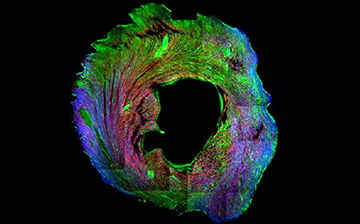This division supports the development and demonstration of modular platform technologies and engineering approaches to manipulate and interface with biology to enable a new paradigm of biomedical intervention for human health, without preference for any disease or application.
Program Areas: Early-Stage Innovation Cluster
Program Areas: Translation and Commercialization Cluster
Collaborations
An important aspect of the Institute’s mission is encouraging collaborations among the institutes and centers at NIH, other federal agencies, and the private sector.
- Interagency Modeling and Analysis Group (IMAG) – IMAG brings together program officers across federal agencies to communicate, disseminate, and plan collaborative activities and joint initiatives related to computational and analytical modeling and analysis of biomedical, biological, and behavioral systems, see IMAG Research. IMAG also hosts the NIH Population Modeling Scientific Interest Group and the Multi-scale Modeling (MSM) Consortium.
- Synthetic Biology Consortium (SBC) - The SBC is a trans-NIH effort to foster collaborations among researchers and share synthetic biology technologies to address unmet needs in biology and medicine.
























